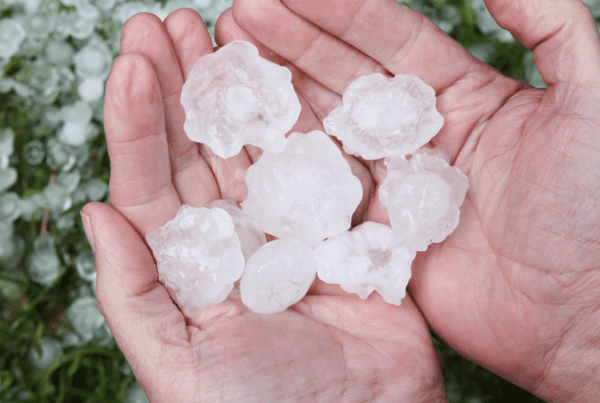When it comes to insuring your investment property, there are a lot of options to consider. It can be tricky to determine what coverage you need, but it’s important to get it right. The last thing you want is to find out that your policy doesn’t cover something you thought it would. In this blog post, we’ll help you navigate the world of investment property insurance to make the best decision for your portfolio.
Determining the Optimal Insurance Coverage for Your Investment Property
As an insurance agent, one of the most common questions I get from clients is, “how much insurance do I need for my investment property?” It’s a great question and one that doesn’t have a simple answer. The coverage you’ll need will depend on several factors, including the value of your property, risk tolerance, and available coverage types.
There are two main types of insurance coverage for investment properties: property insurance and liability insurance. Property insurance covers damage to the physical structure of your property, while liability insurance covers damages that occur as a result of your negligence or perceived negligence. Remember, you don’t actually have to be at fault to be sued. You could be sued simply for owning the property and your name is on the deed. Both property damage and liability coverages are important, but you’ll need to decide how much coverage you need based on your individual circumstances.
The first step in determining the right coverage is the cost of rebuilding the property. This is different from the property’s market value, as it considers the cost of materials and labor to completely rebuild the structure from scratch. Your insurance company should be able to provide you with a rough estimate of this amount. However, you are the ultimate responsible party for selecting your coverage limit. Don’t underestimate just how expensive it is to rebuild a home once it has been damaged or destroyed.
Today, there are additional factors that may impact the cost of rebuilding. For example, supply chain issues, labor shortages, and inflation can increase construction costs. As a result, it’s important to review your insurance coverage regularly to ensure that you have enough coverage in case of a total loss.
Next, you’ll need to consider your risk tolerance. If you’re the type of person who is comfortable with a little bit of risk, you may be able to get by with a higher deductible than someone who is more risk-averse. This is because there is always the possibility that your property could be damaged or destroyed despite your best efforts to protect it. The key here is to ensure that you have enough coverage to protect yourself financially if something happens to your property.
Finally, you’ll need to consider the available coverage types and choose the ones that make the most sense for your situation. For example, if the property is in an area with high flood risk, you may want to purchase flood insurance.
There’s no one-size-fits-all answer to determining how much insurance coverage you need for your investment property. Instead, the coverage you’ll need will depend on several factors, including the value of your property, risk tolerance, and available coverage types. By taking these factors into account, you can ensure that you have enough coverage to protect yourself financially if something happens to your property.
The Different Types of Leases
Regarding investment property, different leases can be used, and each type of lease can impact insurance coverage differently. To help you understand how leases and insurance work together, we’ve included a brief overview of the two most common types of leases.
- Annual Lease
- Short-Term Rentals (like AirBnB)
Annual Lease:
An annual lease is the most common type of lease for investment property. In this arrangement, the tenant pays rent to the landlord every month, and the lease is typically for one year.
From an insurance standpoint, an annual lease gives the landlord more stability and predictability regarding coverage. That’s because the landlord knows that the tenant will be in the property for at least a year, so they can purchase a policy that covers the entire lease length.
Short-Term Rentals (STR):
Short-term rentals, like those arranged through Airbnb, are becoming increasingly popular. In this arrangement, the landlord rents their property for a short period, typically for a few days or weeks.
From an insurance standpoint, short-term rentals can be riskier than annual leases. That’s because the landlord has less control over who is renting the property, and there is a higher likelihood that the property will be damaged. As a result, it’s important to ensure that you have adequate coverage in place if you rent out your property on a short-term basis.
How the ownership of an investment property can affect the type of insurance coverage needed
When it comes to investment property, how the property is owned can affect the type of insurance coverage needed. For example, if an LLC or partnership owns the property, coverage may need to be obtained in the name of the LLC or partnership.
Sole Proprietorships
You’ll need to insure the property in your name if you own an investment property as a sole proprietor. However, this means that you are personally liable for what happens at your rental properties! Make sure you obtain a sufficient amount of personal liability, including a personal umbrella or excess liability policy, to cover this rental property exposure.
General Partnerships
If a partnership owns your investment property, you’ll need to obtain insurance in the name of the partnership. The partnership will be held liable for any injuries or damages on the property, so it’s important to make sure that the policy covers the structure of the building and any contents within it. In addition, the policy should provide liability coverage in case anyone is injured on the property.
Limited Liability Companies (LLCs)
If an LLC owns your investment property, you’ll need to insure the property in the name of the LLC. The LLC will be held liable for any injuries or damages on the property, so it’s important to make sure that the policy covers the structure of the building and any contents within it. In addition, the policy should provide liability coverage in case anyone is injured on the property.
Trusts
If your investment property is held in a trust, you’ll need to insure the property in the name of the trust. The trustee will be held liable for any injuries or damages on the property, so it’s important to ensure that the policy covers the structure of the building and any contents within it. In addition, the policy should provide liability coverage in case anyone is injured on the property.
Possible Insurance Coverage Gaps
Investment property can be a great way to diversify your portfolio. However, you also know that there are potential risks involved with owning rental property. One of those risks is the possibility of insurance coverage gaps.
What are insurance coverage gaps?
An insurance coverage gap is when an insured party does not have enough insurance to cover their losses. Coverage gaps can occur for various reasons, but they are most commonly the result of underinsurance or exclusions in the policy.
Loss of Rental Income
One of property owners’ most common coverage gaps is a loss of rental income. If your property is damaged in a way that prevents you from being able to rent it out, your insurance policy may not cover the loss of income. As a result, it’s important to ensure that your policy has adequate coverage for loss of rental income.
Negligent Property Entrustment
Another potential coverage gap is negligent property entrustment. This occurs when you allow someone to use your property and damage it. Because most standard insurance plans do not cover this coverage, it’s critical to check your policy before allowing others to utilize your home.
Coverage for Exposures Specific to Short-Term Rentals
Owning and operating a short-term rental property may sound enticing. But have you considered the additional types of exposures for a loss you might be inviting? For example, what if a guest bring bed bugs into your short-term rental property? Most insurance policies specifically exclude damage caused by bugs, and they certainly don’t cover the cost to rid the property of them! Some short-term rental insurance policies, however, provide such coverage! This is just one example of how short-term rentals differ from traditional annual lease properties and how a specialized short-term rental insurance policy might be a better solution.
Liability Coverage (Off Premises and On Premises)
Most policies will have liability coverage, but it’s important to check the limits and make sure that it meets your needs. You may also consider purchasing an umbrella policy to provide additional protection.
Insurance coverage gaps can occur for various reasons, but they are most commonly the result of underinsurance or exclusions in the policy. As a result, it’s important to be aware of potential coverage gaps and purchase adequate coverage for your property. You can also talk to your insurance agent about any potential exclusions in your policy. By doing this, you can be sure that you and your property are fully protected.
Choosing the right insurance policy for your investment property is a critical decision. By taking the time to understand what coverage is available and what you need, you can rest assured that your investment is protected. At Watkins Insurance Group, we’re here to help make that process as easy as possible. We have years of experience working with real estate investors, and we’re equipped with the knowledge and resources to find the policy for your needs. If you’re ready to get started, contact us today. We’d be happy to discuss your options!
Hanna Ogle, CIC, CRM, CPRM
Vice President, Personal Insurance








